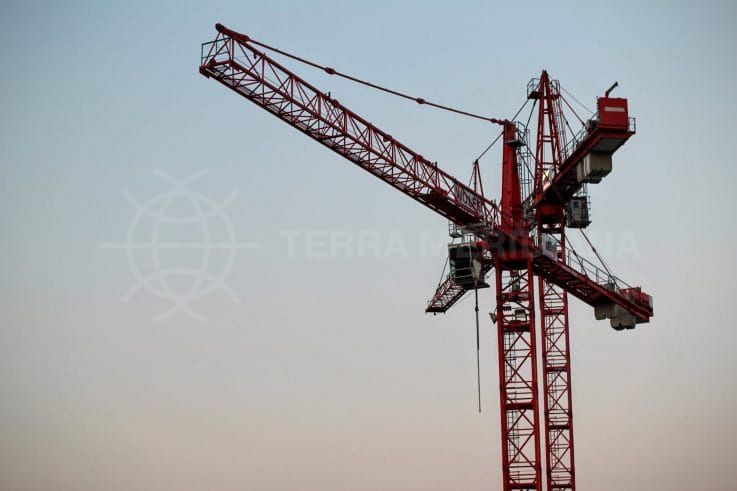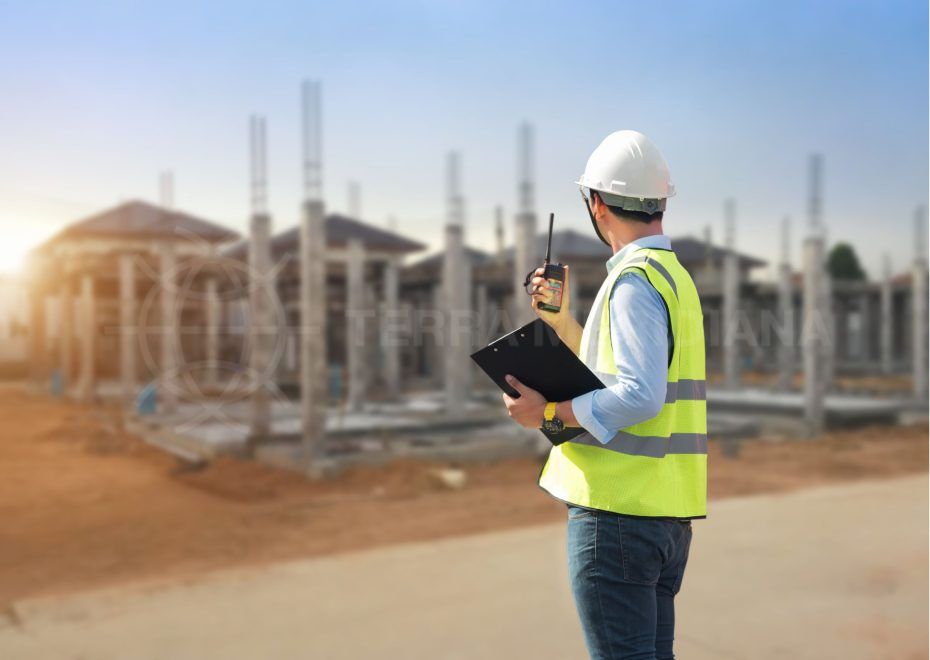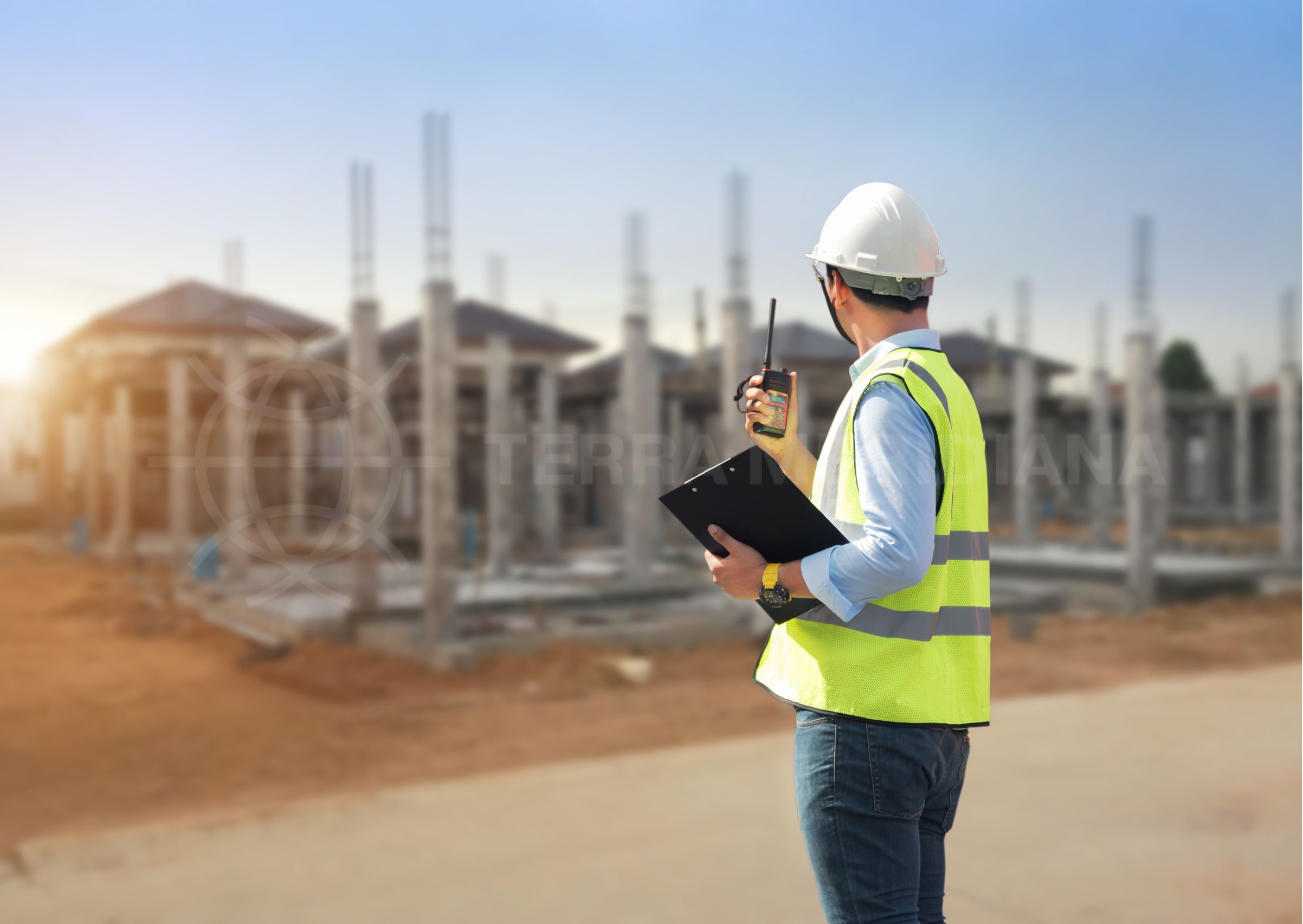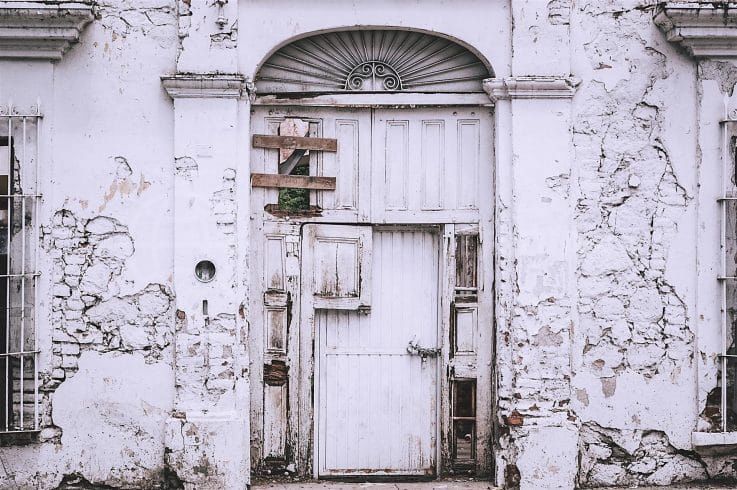
Consult an expert
Common Structural Issues in Spanish Properties
Spain is a large country with many different climatic, geological, natural and cultural characteristics. Building construction must take those into account. Survey Spain’s observations made here largely refer to constructions found in the Mediterranean coastal and inland areas, specifically the Costa del Sol in Estepona, Benahavis and Marbella.
Survey Spain has been inspecting properties for buyers and owners over the last 20 years, and by far, the most common problems found are associated with damp – rising up, coming down or penetrating through. These can all have consequences for the decorative, technical and structural ‘health’ of a building.

Structure:
What are the most common structural issues found in Spanish properties?
Structural failure in modern Spanish properties, in our experience, is very uncommon. Since 2001, all building construction must have a 10-year decennial structural insurance covering all the reinforced concrete elements of a building. The insurers appoint specialists to supervise the construction of these elements, ensuring that all is done correctly.
However, if a building is being constructed by and for occupation by the owner, they can elect not to have that insurance policy, thus saving costs. This is one of the reasons developers are keen to sell individual sites to villa purchasers, thereby allowing the opportunity to reduce the cost of the property. The absence of insurance should be stated in the legal title of the property.
Survey Spain thinks this is a false economy for two reasons:
a. The construction is not supervised, so the building contractor can save on costs by taking shortcuts, making the construction less secure.
b. If there is no decennial insurance, the building cannot be sold to another party for 10 years unless that party knowingly agrees to accept the absence of that insurance.
Even with appropriate insurance, it must be borne in mind that the occupier of a faulty building will suffer the inconveniences of the faults until they are repaired. Securing payment from insurance companies inevitably involves delay and disappointment, so it’s much better to ensure a building is constructed correctly before its purchase.
How does the age of a property influence the likelihood of structural issues?
Buildings constructed prior to 2001 do not have the reassurance of the structural elements having been supervised by an independent specialist.
Building materials inevitably deteriorate over time, so an older building is more likely to have problems.
Design and material defects will become apparent over time, especially if there has not been regular or specialist maintenance.
Understanding the Basics
What are the signs of foundational problems in a property?
The principal indication is cracking.
- a. However, it should be noted that not all cracks or fissures in a building are an indication of a foundation structural problem.
- b. Note that the definition of a ‘crack’ goes entirely through the structure and is evident on both sides, whilst a ‘fissure’ is a break of the surface element that does not penetrate through the structure.
How do soil types in Spain affect the structural integrity of buildings?
Different subsoils require different structural designs. If the foundations and structure of the building have not taken those into account, there can be problems.
Again, since the turn of the century, geological surveys have been a legal requirement, and, in any case, foundations cannot be designed correctly without that knowledge.
Some areas are notorious for having subsoils that change with their support on a seasonal basis according to their moisture level. A house on this type of subsoil, with inappropriate foundations, was once described to Survey Spain as a “dancing house” due to cracking opening and closing on a seasonal basis.
If the movement is minor, any cracking that appears can be filled with flexible material to prevent water penetration, and the movement can be accepted. However, more significant movements will require the underpinning of the structure. Survey Spain has seen instances where relatively modern houses have had to be demolished due to these problems.
Are there common issues related to using certain construction materials in Spain?
There has been much recent publicity regarding defects in structural beams due to short-term manufacturing techniques. These are part of a long list of innovations that have shown defects over time. Unfortunately, not all these problems are known until the defects occur, and many cannot be visually identified without in-depth structural surveys involving core samples, digging down, and checking foundations.
Such investigations are not practical for the average house purchaser, where the seller will not be prepared to have the decoration of their house inevitably damaged during the investigation works nor delay the sale while the works are carried out. All this is where there may be pressure from other parties interested in the building who are not equally cautious.
The construction of any building involves thousands of different elements made of different materials and used with other techniques. All of these must be correct to create the perfect building.
Diving Deeper
How do weather conditions, like heavy rains or extreme heat, impact the structural health of Spanish properties?
Different materials react differently to climatic changes over time, especially with the extremes of heat, cold, dry, and saturating damp.
Different materials in a building expand and contract in different ways according to changes in heat and humidity, creating fissures and even cracks that can let in rain, plant roots and insects, all of which worsen the problem. Long-term thinking on the choice of materials used in the design and construction, plus appropriate maintenance, will reduce or eliminate these problems. However, nature has a habit of persistence, which makes delays or cost-cutting in materials inevitably more expensive to correct in the future.
Beachfront properties are also affected by corrosive salt spray and humidity, in common with river and lakeside properties that can be affected by rising damp and even flooding. These problems are likely to increase if the climate crisis forecasts of rising sea levels, more storms and torrential downpours are correct.
Are there specific architectural styles in Spain that are more susceptible to structural issues?
The established Andalucian style with a pitched roof has survived the test of time. More modern box-like structures have yet to be proven, and the flat roofs will require regular maintenance, especially around the edges, as they are fully exposed to the heat and drying effects of the sun. In the same way as the traditional structures, they must deal with rainwater pouring off the roof and rising damp.
How do coastal properties in areas like the Costa del Sol differ in structural challenges compared to inland properties?
As mentioned above, coastal properties in areas like Marbella and Estepona, which are meant frontline and close by, will inevitably struggle with humidity, with salt spray and wind blasting sand, all having detrimental effects on the building and the internal comfort. The design and construction materials must consider these. However, building surveys/home inspections often show thoughtless specifications of metals and unprotected wooden elements, which will deteriorate quickly unless they are maintained on a much more regular basis than properties further up the hillside.
Common Problems
What are the most common problems found?
The most common problems found by Survey Spain’s building inspection service undoubtedly relate to damp. So often, construction of the foundations and lower-level walls does not take moisture into account, with slapping on a coat of waterproof paint before mounding earth against the wall being held to be sufficient to keep damp at bay for the lifetime of the building. This is clearly inadequate and does not comply with the building regulations.
Gutters around the roof edges are not in the design, so when it rains, all the water falls and soaks the ground beside the walls, quickly penetrating into the building. At surface level, decorative external tiling is fixed to the lower metre of the wall to stop the splashing roof water from spoiling the look of the wall, but that prevents any rising damp evaporating externally, so it can only evaporate through the internal decoration of the wall into the rooms of the house. The absence of damp-proof courses in the brickwork and no waterproofing laid under floors built directly onto the ground make matters worse in older buildings.
Prevention and Maintenance
What regular maintenance steps can prevent common structural issues?
Setting up a regular maintenance schedule, advised by a competent professional experienced in identifying building defects, is by far the best advice. Every building is individual and has different requirements. It’s much better and less costly to deal with problems externally during construction, preventing especially damp from entering a building, rather than trying to cure its effects thereafter.
When it comes down to it, the best maintenance step to be taken is in the initial design and specification, especially ensuring that construction is being carried out efficiently and intelligently.
This is especially the case for the prevention of damp, which appears to be primarily ignored traditionally within the whole construction industry, where the concentration is much more on the four or five months of heat rather than the seven or eight months of temperate climate when it can and does rain, sometimes to an extreme extent. Single-figure temperatures are not uncommon, with frost even being experienced only a short distance inland from the sea.
How often should a property be inspected for potential structural problems?
Based on “a stitch in time saves nine”, it’s always best to keep an eye open for any defects and deal with them promptly. This is especially the case for external fissures and cracks, which should be filled to prevent water ingress, etc.
Are there any specific warning signs homeowners should be vigilant about?
Prior to purchase, a careful survey/inspection of the property for evidence of damp ingress from any direction, cracking and off-level window or door lintels can prevent the purchase of somebody else’s problems.
Check that the property has or had decennial insurance, even if the 10-year period has passed.
Look around the neighbourhood and see if any less well-presented properties in the area show apparent defects.
Check for potential rockfalls and landslips above or below that remove support. Also, potential water hazards coming down hillsides might affect this particular property or the whole neighbourhood.
Talk with neighbours and gardeners, janitors and anyone who may have been in the area for a while about their experiences over the last few years that might have affected or affected this property in the future.
Obtain a copy of the last few years’ AGM Minutes of the community where the building lies, as these will list the common concerns.
Addressing Issues
If a structural issue is identified, what is the typical process for remediation?
Unless one has specific building experience within Spain, it’s best to consult a local building expert. Ensure they have experience in identifying defects and their causes and are not just design specialists. Often, it’s good to get a second opinion and listen to all recommendations, but at the end of the day, keep a level head and act prudently. A long-term solution is often much more economical than multiple short-term fixes.
How long does it typically take to address and fix common structural problems?
Every property is individual, so every problem has its own timescale and cost, and no work can be described as typical. It also depends upon the availability of appropriate tradespeople and, with the scarcity of materials these days, the availability of replacements for the items that have failed.
Legal and Documentation
Are there legal obligations for property owners when structural issues are identified?
The obligation is principally to themselves, seeking early professional advice regarding building changes that concern them. Most often, the matters are not serious and can be corrected by minor works. Dealt with quickly, they stop minor matters from progressing into bigger ones.
If there is a significant problem, the cause of it should be found and stopped as soon as possible, and the necessary remedial works should be carried out quickly.
How do structural issues impact property insurance and valuation?
Undoubtedly, the costs of correcting defects in a building will be considered in a current market valuation. Bank valuations are much less rigorous, and the defects must be significant before the valuer notices them in their brief walk-round visit. If they are serious, the bank may be advised not to lend on the property or at least make it a condition of the mortgage loan that the necessary works are carried out before the loan money is transferred.
Property insurers will often try to avoid responsibility for the costs of defects, citing that they are an initial building fault or an ‘Act of God’, which they will not cover. The standard response nearly always appears to be “No”, so a homeowner must fight for compensation. If there is a structural problem within the first 10 years, then it’s more difficult for the insurer to avoid their responsibility. But remember, the basic decennial insurance will not cover the walls between the structural pillars, driveways, pools, gardens, etc. unless they are expressly stated as included.
Working with Professionals
How can Survey Spain assist in identifying and addressing structural issues?
Our surveyors/home inspectors all have many years of experience living and working with building construction local to where they work. The directors of Survey Spain have chosen them and trust them to be conscientious in their work and to take the attitude of being a home buyer and what they would need to know about the building before agreeing to buy it.
Survey Spain is more than 20 years old, and the directors have been working in Spanish property for more years than that. Campbell D. Ferguson, the founder and owner, is a Fellow of the Royal Institution of Chartered Surveyors (FRICS), the most important professional worldwide organisation. He reviews all the draft reports submitted by the surveyors/home inspectors, often questioning them on points that are not clear. Only then does he sign the Report and send it to the client.
Thereafter, the client may ask any questions regarding the report and the property and often is put in direct contact with the professional who inspected the property.
What qualifications do your surveyors have in identifying structural problems specific to Spanish properties?
Training, years of experience, and being property owners and occupiers are the security that gives our clients confidence. Many have come from outside Spain many years ago, and so can empathise with and guide clients who are perhaps coming to the country with little knowledge of the regulations, culture, and conventions.
The surveyors/inspectors are a selection of members of RICS, the UK’s Chartered Institute of Builders, Architects, or Technical Architects. All these organisations demand that their members have professional indemnity insurance.
How does the process of working with Survey Spain differ from other surveying companies?
Whilst professional letters after a name are essential, it’s the experience and conscientious attitude that make Survey Spain’s surveyors/inspectors most beneficial to their clients. They take personal responsibility for providing their client with the best inspection and advice available, often working beyond the original instruction where it’s felt that more advice is required. They ask the questions the client doesn’t know to ask and analyse the replies for accuracy and relevance.
Closing Remarks
Survey Spain is essential to homebuying and liaises with clients’ lawyers and estate agents on the Costa del Sol in areas such as Benahavis, Marbella and Estepona. The findings and report are confidential to their client and are not shared with sellers, agents or even lawyers without the client’s permission. However, they always recommend passing on a copy of the Survey/Inspection Report to the lawyer. Survey Spain can also compare a property’s Title and Tax descriptions with what the surveyor/inspector finds is physically there. More often than not, there are differences, some of which may be crucial to the legality of the building or its use and which could be a significant cost or concern to the buyer at the time of purchase or in the future.
When writing to thank for a comprehensive Survey Spain Report, a client stated, “We consider the money spent more of an investment into our peace of mind that we are making a good choice, rather than a cost”.
By Campbell Ferguson | Consult an expert | September 25th, 2023
Related Posts


